Pea Puffers are fascinating but sometimes a little challenging to keep because they are a little too curious about everything around them. If a tank mate is too slow or too tempting your Puffer may decide to see what they taste like! So with this in mind, I’ve chosen the 10 best Pea Puffer tank mates that are a good match in terms of temperament and size.
10 Compatible Pea Puffer Tank Mates
Here are 10 of the best Pea Puffer tank mates that you should consider:
Endler’s Livebearer
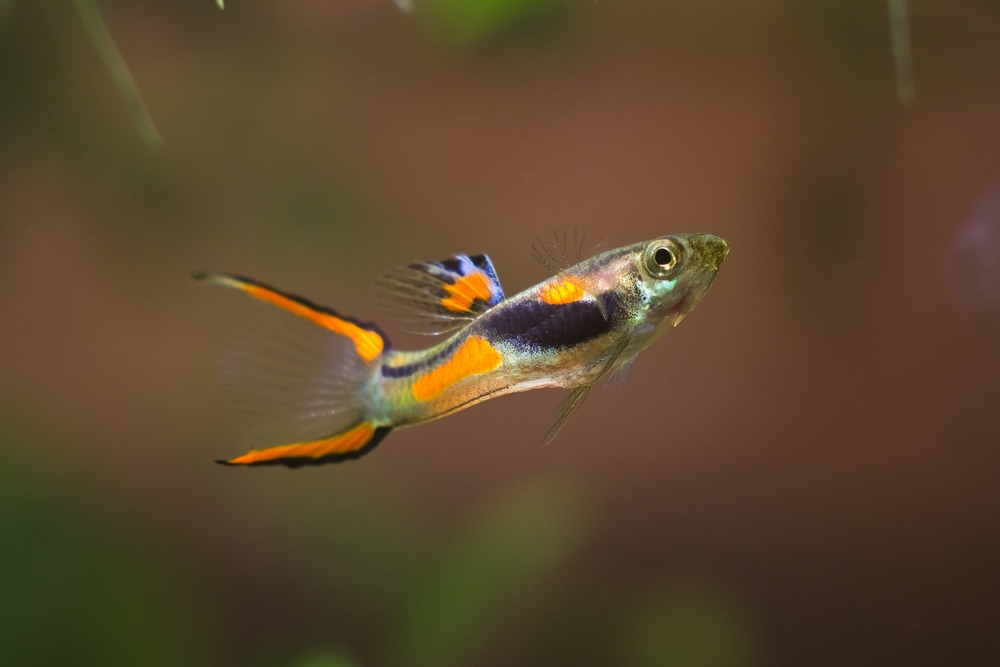
Endler’s Livebearer looks very similar to wild-type Guppies except they are more vividly green and orange in color. I recommend them over Fancy Guppies because they don’t have the large, wagging fins that Pea Puffers find irresistible to bite.
They are also about the same size as Pea Puffers, making them perfect for a freshwater nano fish aquarium. Like Guppies, Endler’s Livebearers are hardy and willing to eat just about anything!
Considering how rare they are in nature I don’t recommend keeping them with Guppies because the two species will hybridize. Instead, raise your pure Endler’s Livebearers and sell them back to pet stores so others have a chance to try this unique nano fish! Tank-raised specimens are also hardier and take pressure off of wild stocks.
- Scientific Name: Poecilia wingei
- Origin: South America
- Size: ¾ to 1 inch
- Temperament: Peaceful
Kuhli Loach
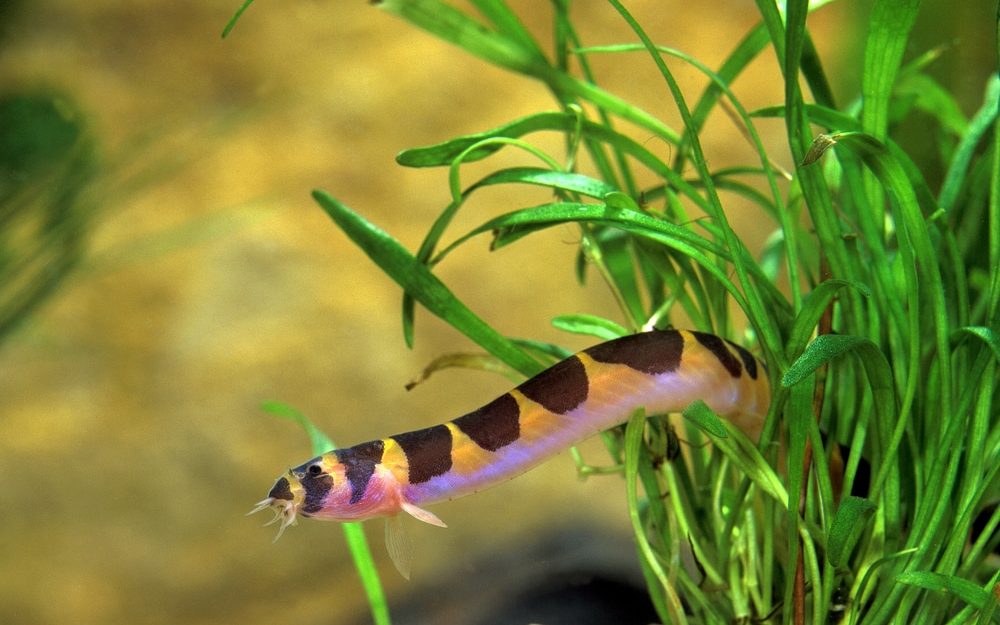
Kuhli Loaches are a popular alternative to those interested in the colorful but too-large Clown Loach. Maxing out at around 4 inches these worm-like fish are bottom dwellers that love to burrow through sandy substrates looking for worms and fallen flakes.
Since they occupy an entirely different niche they are excellent tank mates for Pea Puffers. But if you know your male Puffer is on the aggressive side I’d be careful. Kuhli Loaches are scaleless fish and a Puffer bite can easily become infected.
Both Puffers and Loaches love Tubifex worms, bloodworms, and other small invertebrates. Provide tangles of Java Moss and subdued lighting and you’ll make both species happy!
- Scientific Name: Pangio kuhlii
- Origin: Southeast Asia
- Size: 4 inches
- Temperament: Peaceful; Shy
Chili Rasbora
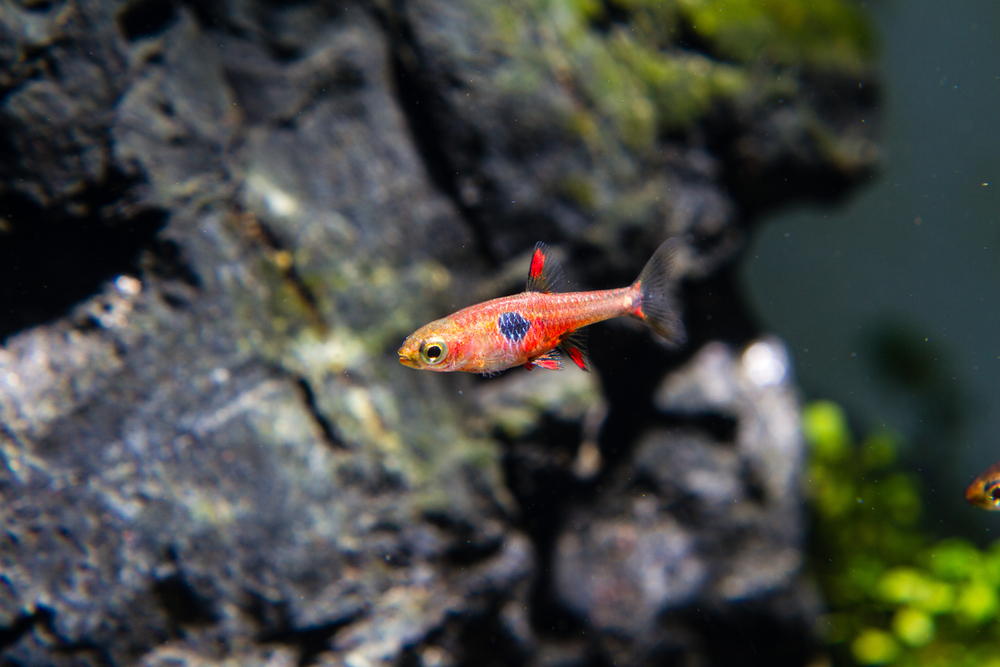
Chili Rasboras are some of the tiniest nano fish you can find in the hobby. However what they lack in size they make up for in intensity. Their brilliant red coloration looks like tiny rubies darting in and among dense live plant tangles.
Being so fast and active even an aggressive Pea Puffer will have a hard time harassing a school of Chili Rasboras. They do prefer very soft, even blackwater environments (pH 4.0-6.0). I use Indian Almond leaves and Driftwood to help keep the pH low through natural tannin buffering.
- Scientific Name: Boraras brigittae
- Origin: Indonesia
- Size: ½ to ¾ inch
- Temperament: Peaceful; Schooling
Platy
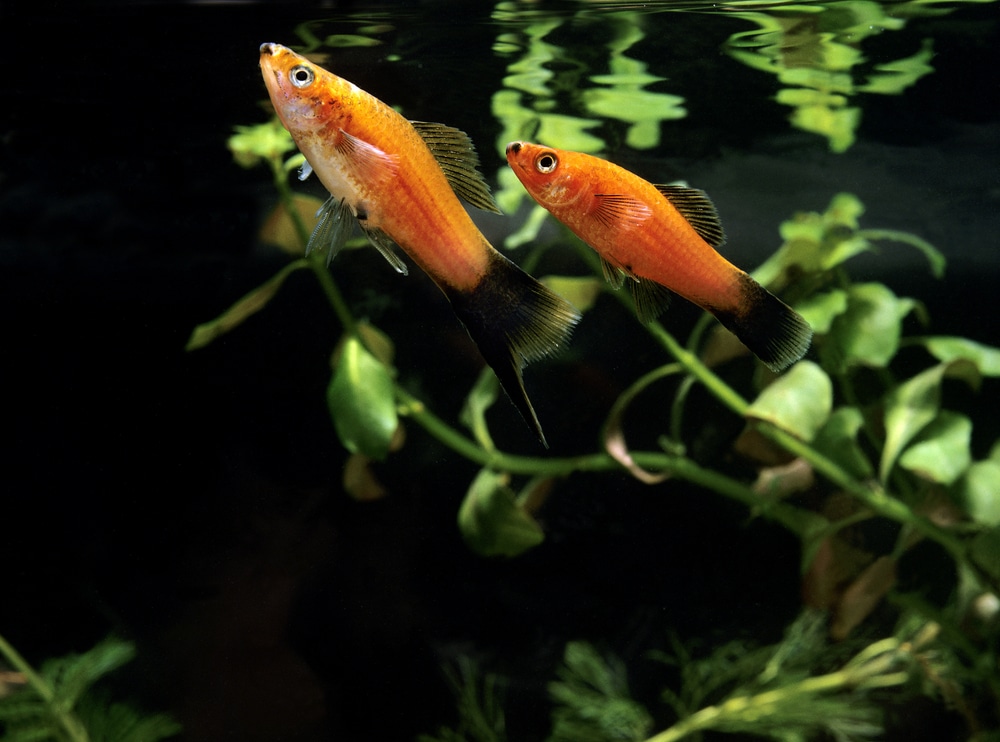
Platies are hard to beat when it comes to being a versatile community tank dweller. They can coexist with any fish that won’t eat or bully it. And unlike their larger cousin the Swordtail, Platies don’t have any fin extensions to tempt curious Puffers.
Being livebearers Platies will breed regularly when well fed and kept in good conditions. The fry are usually eaten by the other fish, including the parents, unless you separate the female beforehand.
Platies are omnivores and appreciate a mixture of plant and animal matter in their diet. They are also salt tolerant and do well in a wide range of pH conditions (6.0-8.0).
- Scientific Name: Xiphophorus maculatus + variatus
- Origin: Mexico
- Size: 2 inches
- Temperament: Peaceful
Neon Tetra
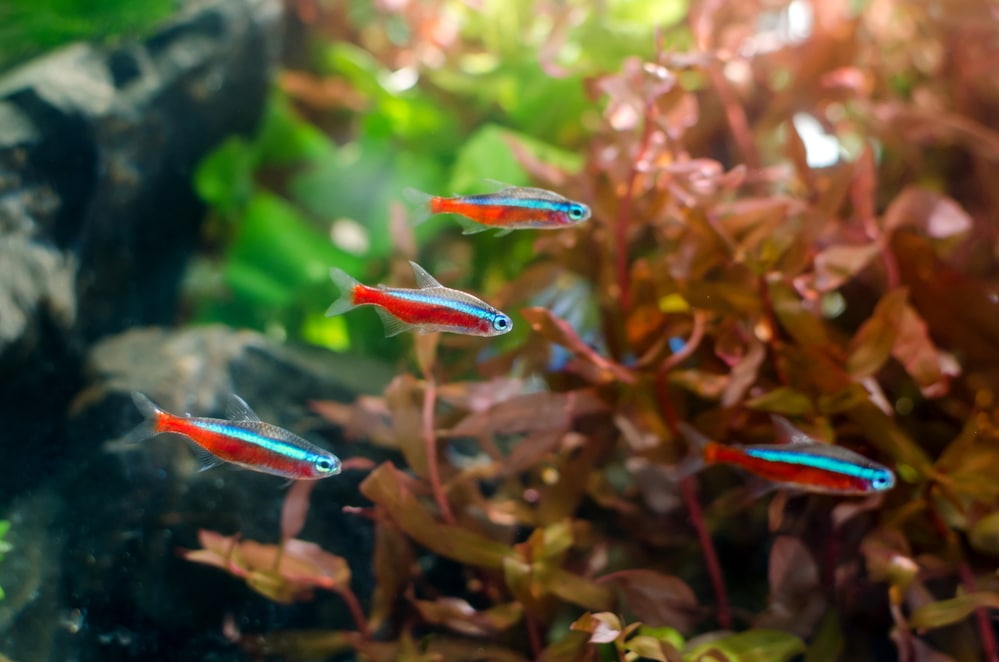
Neon Tetras are some of the oldest aquarium fish in the hobby. While many aquarists prefer Cardinal and other more dramatic species the Neon Tetra is still immensely popular. For one, they have been tank bred for decades, making them significantly hardier and accepting of a wider range of water conditions than their cousins.
Neon Tetras are much more likely to breed in home aquaria and are significantly cheaper than Cardinal Tetras as well. Their brilliant red and blue stripes contrast nicely with the more subdued tones of Pea Puffers.
Since they can be somewhat skittish, lively tank mates and subdued lighting helps them feel more secure and willing to swim in open water. You’ll also need to keep at least six together, with more always being better.
- Scientific Name: Paracheirodon innesi
- Origin: South America
- Size: 1½ inches
- Temperament: Peaceful; Schooling
Killifish
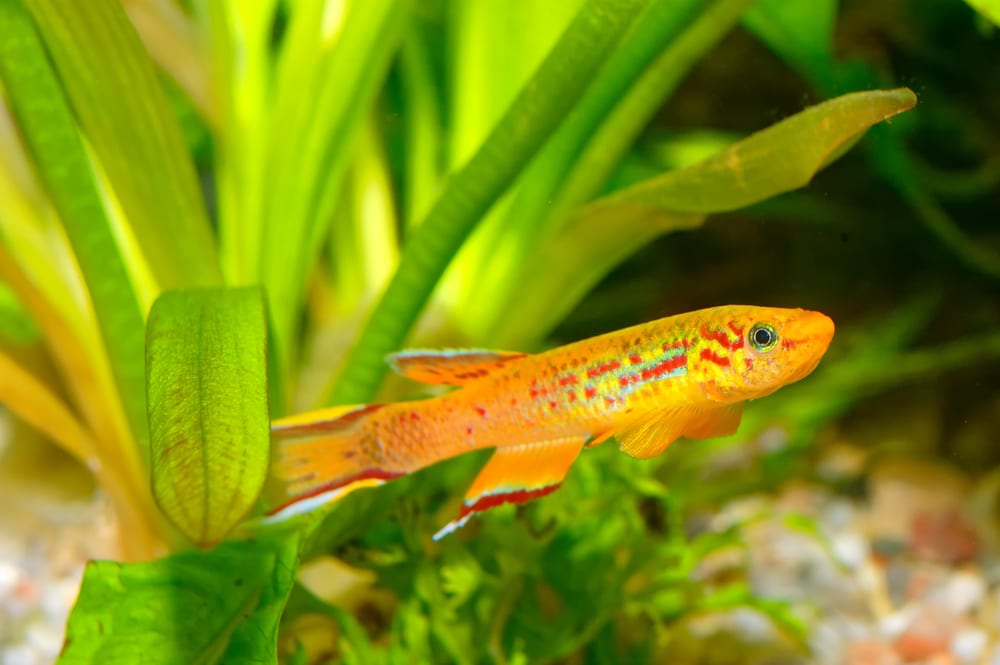
Killifish aren’t nearly as well known as they should be. Considering many of them rival coral reef fish for dazzling colors, aquarists are really missing out on these fascinating animals.
Killifish are found all over the world but the majority are in Africa and South America. The smaller species are excellent tank mates for Pea Puffers as they are small themselves, non-aggressive, and gorgeously colorful.
The Bluefin Notho is probably the most popular species (Nothobranchius rachovii) with others like the American Flagfish (Jordanella floridae) showing up on occasion.
Many Killifish survive seasonal droughts by laying eggs that can survive the drying up of their ponds. These eggs away the rains locked away in the soil like seeds. For convenience’s sake, many annual Killifish are sent by mail in pouches of peat moss for you to hatch and raise!
- Scientific Name: order Cyprinodontiformes
- Origin: Worldwide
- Size: Variable; choose 1-3 inch species
- Temperament: Mostly Peaceful
White Cloud Mountain Minnow
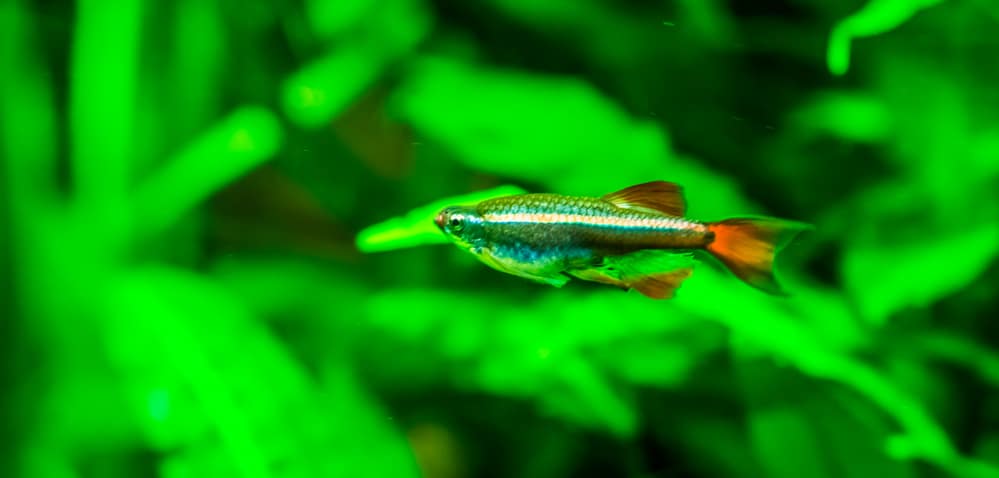
White Cloud Minnows are an Asian fish that are sometimes called “Poor Man’s Neon Tetras” due to their similar but subdued coloring. Upon seeing one for the first time you might think they are a new species however they have been around since the 1970’s.
Also, being Cyprinids they are much more closely related to Goldfish, Barbs, and Koi than Tetras. White Cloud Minnows do well in a wide range of temperatures but prefer being kept no warmer than 72-74F.
Much like Pea Puffers they are micro predators, hunting down daphnia, small worms, and other invertebrates for food. Provide them a good mixture of appropriately sized pellets, flakes, and frozen items like brine shrimp nauplii for variety!
- Scientific Name: Tanichthys albonubes
- Origin: China & Vietnam
- Size: 1½ inches
- Temperament: Peaceful
Scarlet Badis
Scarlet Badis are another Indian species that are natural tank mates for Pea Puffers. They are a little uncommon in the hobby but if you ask your local fish tore they should be able to locate some!
Badis males are a brilliant red striped color while females are a pale silver. Scarlet Badis are peaceful towards other fish however males are very territorial and aggressive towards one another.
And like many of the other fish in this list of tank mates they are invertebrate feeders – live and frozen foods are greatly appreciated! However since most of us keep prepared foods on hand as supplements you should consider foods rich in carotenoids and other color-enhancing agents.
Despite being so tiny you should provide 5-10 gallons of space per Scarlet Badis male. Also make sure there are plenty of breaks in line of sight, including plants, rocks, and driftwood to avoid too much fighting.
- Scientific Name: Dario dario
- Origin: South Asia
- Size: ¾ to 1 inch
- Temperament: Peaceful; Territorial
Female & Wild Bettas
Bettas are small and somewhat scrappy themselves. However the long-finned variety that are so popular won’t do well with fin-nipping Pea Puffers.
Wild Bettas are a different story, though. If you’ve ever seen a female Betta you’ll have a better idea of what wild Bettas look like. You can even keep them together in female-only Betta Sororities.
The most popular species is Betta splendens, the Siamese Fighting Fish. But there are actually dozens of closely related species that show up in the trade occasionally. They range from tiny species to ones closer to 4 inches like the Brunei Beauty. All are short-finned and won’t be easily bullied by Pea Puffers.
- Scientific Name: Betta sp.
- Origin: Southeast Asia
- Size: 2-4 inches
- Temperament: Peaceful to Semi-Aggressive
Corydoras
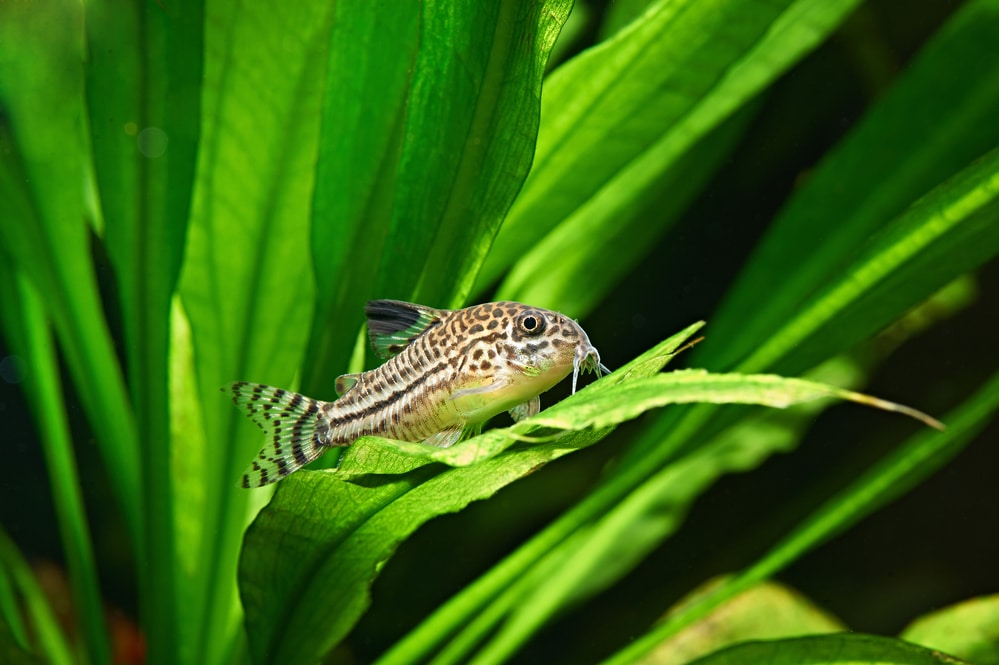
If you’re looking for hardy bottom dwellers I can’t recommend Corydoras enough. These busy little catfish scoot around constantly, chasing one another and searching out hidden tidbits among the bottom. They’ll even take flake food from the surface with other fish.
There are dozens of species of Corydoras so simply choose the type that best suits your budget and aesthetics. They range in size from the 1 inch mid-water swimming Pygmy Corydoras (Corydoras pygmaeus) to the impressively chunky 3½ inch Green Corydoras (Corydoras aeneus).
Most Corydoras prefer soft, slightly acidic waters (pH 6.0-7.0) and elevated temperatures (75-84F). They also accept a wide variety of prepared, fresh, and frozen foods. But if they have trouble competing at the surface make sure you keep sinking pellets or wafers on hand so these active fish get their share.
- Scientific Name: Corydoras sp.
- Origin: South America
- Size: 1-3 inches
- Temperament: Peaceful; Schooling

